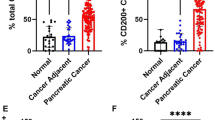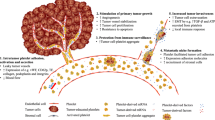Abstract
Breast cancer is prone to metastasis even in early stage disease. Stromal cell-derived factor-1 (SDF-1) is a chemokine that has been associated with the egress of cancer cells from the primary focus and homing to distant sites, while E-selectin has been implicated in their trans-endothelial migration. This study was performed to evaluate the association between SDF-1–3′A and E-selectin S128R—two polymorphisms associated with enhanced function—and the risk of breast cancer, as well as their influence on breast cancer outcome. A retrospective analysis was conducted on 261 patients and 480 healthy controls using PCR–RFLP. The frequencies for the wild-type (GG), GA and AA genotypes of SDF-1 were 43.7, 45.2, and 11.1 % in patients, and 51.5, 41.3, and 7.3 % in healthy controls, respectively, while the SDF-1–3′A allelic frequency was 33.7 % at patients and 27.9 % at controls. The SDF-1–3′A carrier group of patients and the A allele of SDF-1 were overrepresented among the breast cancer cases (p = 0.04 and 0.02, respectively). For the E-selectin S128R polymorphism, the frequencies for the wild-type (AA), AC and CC genotypes were 58.6, 38.3, and 3.1 % in patients and 63.8, 31.4, and 3.8 % in controls, respectively, while the C allelic frequency was 22.2 % for patients and 19.5 % for controls. The CC genotype was associated with poorer survival. Otherwise, no significant association was detected between examined genotypes and tumor characteristics. Overall, our findings support that the SDF-1–3′A confers increased susceptibility to breast cancer and that the E-selectin S128R CC genotype may be related to poorer prognosis. Investigation in bigger cohorts of patients is warranted.


Similar content being viewed by others
References
Ferlay J, Shin H, Bray F, Forman D, Mathers C, Parkin D (2010) GLOBOCAN 2008, Cancer incidence and mortality worldwide: IARC CancerBase No. 10 [Internet]. International Agency for Research on Cancer, Lyon, France
American Cancer Society (2010) Cancer Facts & Figures 2010. American Cancer Society, Atlanta
Polyak K (2007) Breast cancer: origins and evolution. J Clin Invest 117(11):3155–3163. doi:10.1172/JCI33295
Tang P, Skinner KA, Hicks DG (2009) Molecular classification of breast carcinomas by immunohistochemical analysis: are we ready? Diagn Mol Pathol 18(3):125–132. doi:10.1097/PDM.0b013e31818d107b
Gupta GP, Massague J (2006) Cancer metastasis: building a framework. Cell 127(4):679–695. doi:10.1016/j.cell.2006.11.001
Zlotnik A, Yoshie O (2000) Chemokines: a new classification system and their role in immunity. Immunity 12(2):121–127
Vagima Y, Lapid K, Kollet O, Goichberg P, Alon R, Lapidot T (2011) Pathways implicated in stem cell migration: the SDF-1/CXCR4 axis. Methods Mol Biol 750:277–289. doi:10.1007/978-1-61779-145-1_19
Muller A, Homey B, Soto H, Ge N, Catron D, Buchanan ME, McClanahan T, Murphy E, Yuan W, Wagner SN, Barrera JL, Mohar A, Verastegui E, Zlotnik A (2001) Involvement of chemokine receptors in breast cancer metastasis. Nature 410(6824):50–56. doi:10.1038/35065016
Winkler C, Modi W, Smith MW, Nelson GW, Wu X, Carrington M, Dean M, Honjo T, Tashiro K, Yabe D, Buchbinder S, Vittinghoff E, Goedert JJ, O’Brien TR, Jacobson LP, Detels R, Donfield S, Willoughby A, Gomperts E, Vlahov D, Phair J, O’Brien SJ (1998) Genetic restriction of AIDS pathogenesis by an SDF-1 chemokine gene variant. ALIVE Study, Hemophilia Growth and Development Study (HGDS), Multicenter AIDS Cohort Study (MACS), Multicenter Hemophilia Cohort Study (MHCS), San Francisco City Cohort (SFCC). Science 279(5349):389–393
Theodoropoulos GE, Panoussopoulos GS, Michalopoulos NV, Zambirinis CP, Taka S, Stamopoulos P, Gazouli M, Zografos G (2010) Analysis of the stromal cell-derived factor 1–3′A gene polymorphism in pancreatic cancer. Mol Med Rep 3(4):693–698. doi:10.3892/mmr_00000319
Laubli H, Borsig L (2010) Selectins promote tumor metastasis. Semin Cancer Biol 20(3):169–177. doi:10.1016/j.semcancer.2010.04.005
Petruzzelli L, Takami M, Humes HD (1999) Structure and function of cell adhesion molecules. Am J Med 106(4):467–476
Somers WS, Tang J, Shaw GD, Camphausen RT (2000) Insights into the molecular basis of leukocyte tethering and rolling revealed by structures of P- and E-selectin bound to SLe(X) and PSGL-1. Cell 103(3):467–479
Sperandio M, Gleissner CA, Ley K (2009) Glycosylation in immune cell trafficking. Immunol Rev 230(1):97–113. doi:10.1111/j.1600-065X.2009.00795.x
Gout S, Morin C, Houle F, Huot J (2006) Death receptor-3, a new E-selectin counter-receptor that confers migration and survival advantages to colon carcinoma cells by triggering p38 and ERK MAPK activation. Cancer Res 66(18):9117–9124. doi:10.1158/0008-5472.CAN-05-4605
Wenzel K, Hanke R, Speer A (1994) Polymorphism in the human E-selectin gene detected by PCR-SSCP. Hum Genet 94(4):452–453
Revelle BM, Scott D, Beck PJ (1996) Single amino acid residues in the E- and P-selectin epidermal growth factor domains can determine carbohydrate binding specificity. J Biol Chem 271(27):16160–16170
Edge SB, American Joint Committee on Cancer (2010) AJCC cancer staging manual. 7th edn. Springer, New York
Panoussopoulos GS, Theodoropoulos G, Michalopoulos NV, Gazouli M, Flessas J, Taka S, Stamopoulos P, Manouras A, Zografos GC (2010) Analysis of E-selectin S128R gene polymorphism in pancreatic cancer. J Surg Oncol 102(6):604–607. doi:10.1002/jso.21648
Biancone L, Araki M, Araki K, Vassalli P, Stamenkovic I (1996) Redirection of tumor metastasis by expression of E-selectin in vivo. J Exp Med 183(2):581–587
Kang H, Watkins G, Parr C, Douglas-Jones A, Mansel RE, Jiang WG (2005) Stromal cell derived factor-1: its influence on invasiveness and migration of breast cancer cells in vitro, and its association with prognosis and survival in human breast cancer. Breast Cancer Res 7(4):R402–R410. doi:10.1186/bcr1022
Orimo A, Gupta PB, Sgroi DC, Arenzana-Seisdedos F, Delaunay T, Naeem R, Carey VJ, Richardson AL, Weinberg RA (2005) Stromal fibroblasts present in invasive human breast carcinomas promote tumor growth and angiogenesis through elevated SDF-1/CXCL12 secretion. Cell 121(3):335–348. doi:10.1016/j.cell.2005.02.034
Cabioglu N, Summy J, Miller C, Parikh NU, Sahin AA, Tuzlali S, Pumiglia K, Gallick GE, Price JE (2005) CXCL-12/stromal cell-derived factor-1alpha transactivates HER2-neu in breast cancer cells by a novel pathway involving Src kinase activation. Cancer Res 65(15):6493–6497. doi:10.1158/0008-5472.CAN-04-1303
Zagzag D, Lukyanov Y, Lan L, Ali MA, Esencay M, Mendez O, Yee H, Voura EB, Newcomb EW (2006) Hypoxia-inducible factor 1 and VEGF upregulate CXCR4 in glioblastoma: implications for angiogenesis and glioma cell invasion. Lab Invest 86(12):1221–1232. doi:10.1038/labinvest.3700482
Schioppa T, Uranchimeg B, Saccani A, Biswas SK, Doni A, Rapisarda A, Bernasconi S, Saccani S, Nebuloni M, Vago L, Mantovani A, Melillo G, Sica A (2003) Regulation of the chemokine receptor CXCR4 by hypoxia. J Exp Med 198(9):1391–1402. doi:10.1084/jem.20030267
Balkwill F (2004) Cancer and the chemokine network. Nat Rev Cancer 4(7):540–550. doi:10.1038/nrc1388
Zafiropoulos A, Crikas N, Passam AM, Spandidos DA (2004) Significant involvement of CCR2-64I and CXCL12-3a in the development of sporadic breast cancer. J Med Genet 41(5):e59
Razmkhah M, Talei AR, Doroudchi M, Khalili-Azad T, Ghaderi A (2005) Stromal cell-derived factor-1 (SDF-1) alleles and susceptibility to breast carcinoma. Cancer Lett 225(2):261–266. doi:10.1016/j.canlet.2004.10.039
Hassan S, Baccarelli A, Salvucci O, Basik M (2008) Plasma stromal cell-derived factor-1: host derived marker predictive of distant metastasis in breast cancer. Clin Cancer Res 14(2):446–454. doi:10.1158/1078-0432.CCR-07-1189
Miles FL, Pruitt FL, van Golen KL, Cooper CR (2008) Stepping out of the flow: capillary extravasation in cancer metastasis. Clin Exp Metastasis 25(4):305–324. doi:10.1007/s10585-007-9098-2
Kufe DW (2009) Mucins in cancer: function, prognosis and therapy. Nat Rev Cancer 9(12):874–885. doi:10.1038/nrc2761
Renkonen J, Paavonen T, Renkonen R (1997) Endothelial and epithelial expression of sialyl Lewis(x) and sialyl Lewis(a) in lesions of breast carcinoma. Int J Cancer 74(3):296–300. doi:10.1002/(SICI)1097-0215(19970620)74:3<296:AID-IJC11>3.0.CO;2-A
Julien S, Ivetic A, Grigoriadis A, QiZe D, Burford B, Sproviero D, Picco G, Gillett C, Papp SL, Schaffer L, Tutt A, Taylor-Papadimitriou J, Pinder SE, Burchell JM (2011) Selectin ligand sialyl-Lewis × antigen drives metastasis of hormone-dependent breast cancers. Cancer Res 71(24):7683–7693. doi:10.1158/0008-5472.CAN-11-1139
Hebbar M, Adenis A, Revillion F, Duhamel A, Romano O, Truant S, Libersa C, Giraud C, Triboulet JP, Pruvot FR, Peyrat JP (2009) E-selectin gene S128R polymorphism is associated with poor prognosis in patients with stage II or III colorectal cancer. Eur J Cancer 45(10):1871–1876. doi:10.1016/j.ejca.2009.03.011
Naidu R, Har YC, Taib NA (2011) Polymorphic variant Ser128Arg of E-selectin is associated with breast cancer risk and high grade tumors. Onkologie 34(11):592–597. doi:10.1159/000334060
Conflict of interest
None declared.
Author information
Authors and Affiliations
Corresponding author
Additional information
P. Kontogianni and Constantinos P. Zambirinis have contributed equally to this work.
Rights and permissions
About this article
Cite this article
Kontogianni, P., Zambirinis, C.P., Theodoropoulos, G. et al. The impact of the stromal cell-derived factor-1–3′A and E-selectin S128R polymorphisms on breast cancer. Mol Biol Rep 40, 43–50 (2013). https://doi.org/10.1007/s11033-012-1989-x
Received:
Accepted:
Published:
Issue Date:
DOI: https://doi.org/10.1007/s11033-012-1989-x




